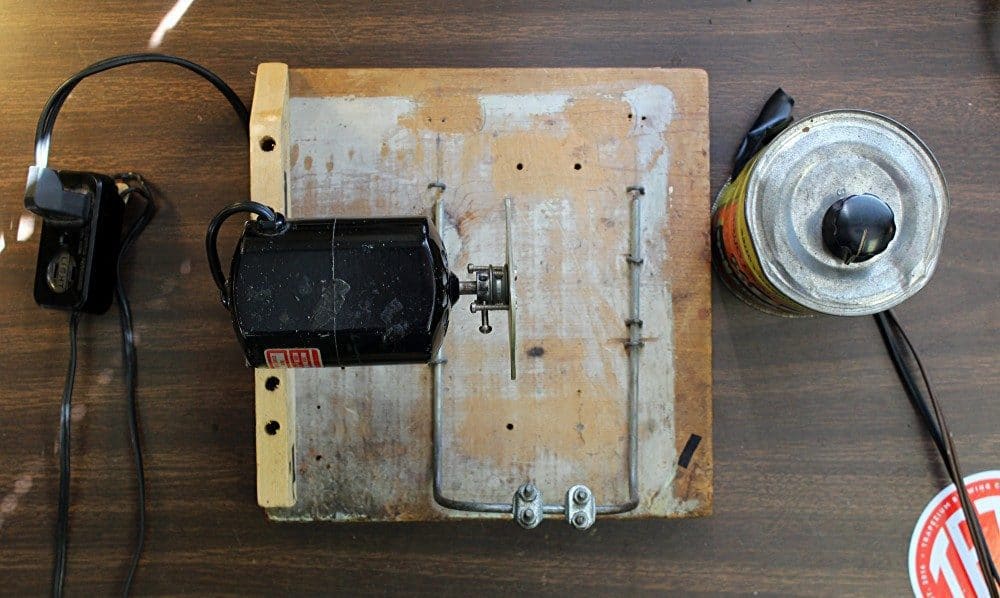
Lindy’s Original Winding Machine
I’m super excited about writing this post. This post highlights Lindy’s original hand-built winding machine. Basically, this post not only showcases a part of history, but it also serves to showcase something else. Lindy Fralin is a legend in the pickup industry. It’s just one of the reasons why we love coming into work every day: getting to work with someone who is super creative and inventive. For me, one of my favorite aspects about Lindy is how humble and “grass-roots” he is. You would never know that the Birkenstock-wearing, motorcycle-riding, asian food-loving dude next to you is a famous pioneer of the electric guitar pickup. His original winding machine is a testament to this – simple, humble, but to the point and effective. A Little History: Lindy built this machine in the late 1980’s, when he was doing rewinds out of a spare bedroom in his Richmond apartment. He would set this machine on a desk, and a spool of wire by his feet. Stepping on the foot pedal to start spinning the coil, Lindy would hold the wire by hand, guiding the wire slowly back and forth – just like they were wound on Vintage Fenders. Lindy used this machine up until the point where Paul Reed Smith gave him a more sophisticated winding machine. Buried in one of Lindy’s closets, I pulled this bad-boy out. I snapped a few photos of it, and got a little giddy to know that this thing still works.
The Machine:
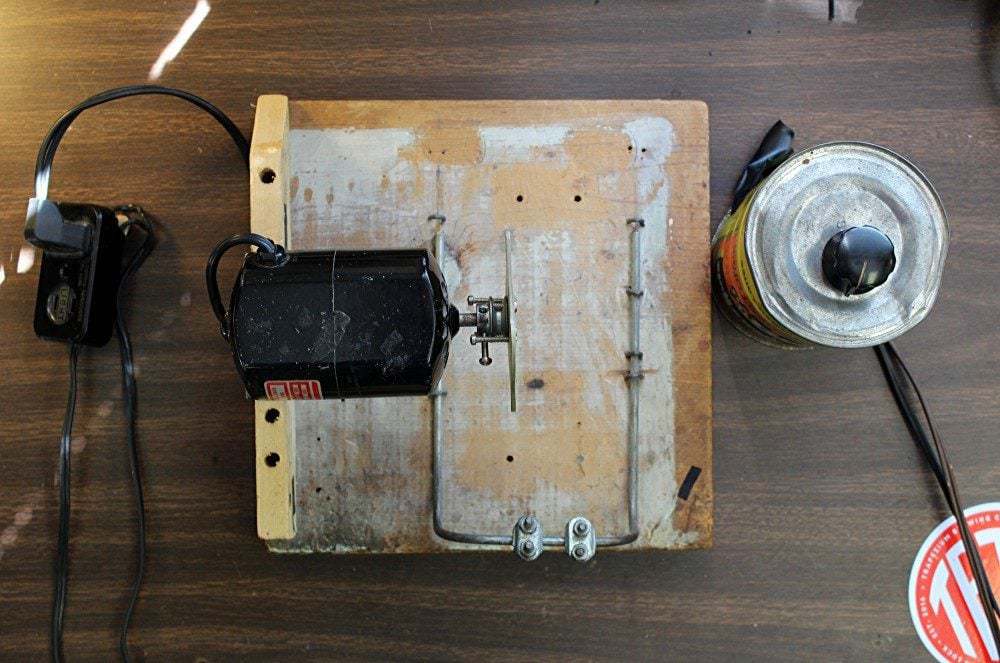 From L-R, there’s the power cord, the Winding Machine itself, and a Variac in a Coffee Can. The Machine includes a Motor and a wire bar used to hold the string guides.
From L-R, there’s the power cord, the Winding Machine itself, and a Variac in a Coffee Can. The Machine includes a Motor and a wire bar used to hold the string guides.
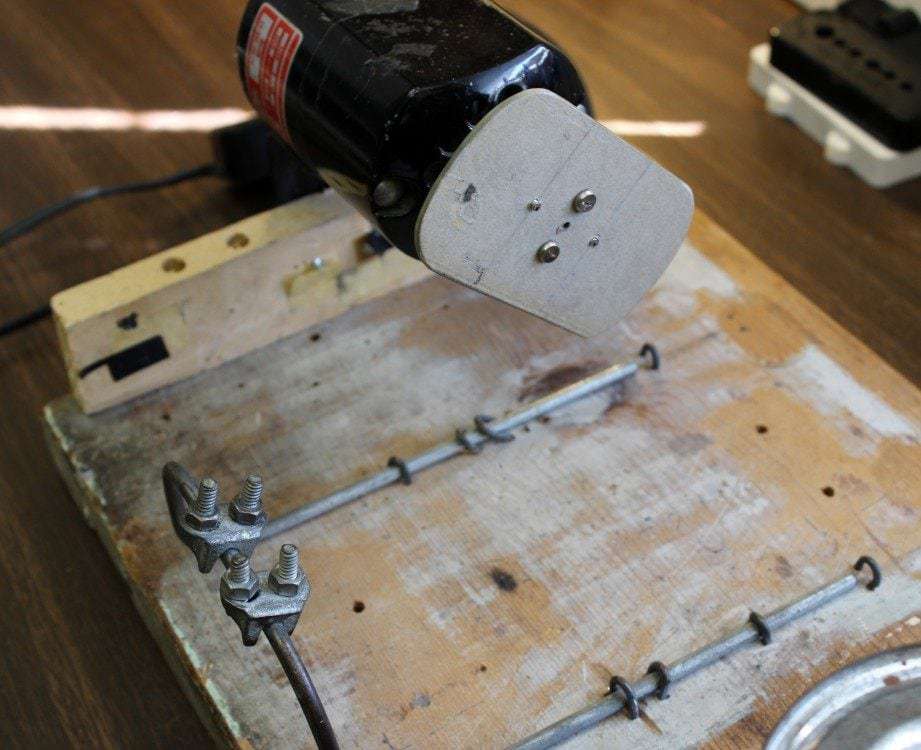 This thing is awesome. Totally awesome. What you have here is a couple pieces of scrap wood as a base, an electric motor with a mount for the pickups, and the string guides. The string guides are bolted to a piece of metal wire, which is “nailed down”. This can be slid out and turned around to reverse wind the pickups (as in a RWRP Strat Middle). By doing this, now the motor is spinning the opposite direction.
The guides are those metal pieces bolted to the bar. These control the width of the pickup, and prevent the wire from going past the pickup’s allowed space.
This thing is awesome. Totally awesome. What you have here is a couple pieces of scrap wood as a base, an electric motor with a mount for the pickups, and the string guides. The string guides are bolted to a piece of metal wire, which is “nailed down”. This can be slid out and turned around to reverse wind the pickups (as in a RWRP Strat Middle). By doing this, now the motor is spinning the opposite direction.
The guides are those metal pieces bolted to the bar. These control the width of the pickup, and prevent the wire from going past the pickup’s allowed space.
The Footswitch:
To wind the pickups, Lindy would operate the motor with this footswitch below. By pushing the footswitch down, the motor would start spinning.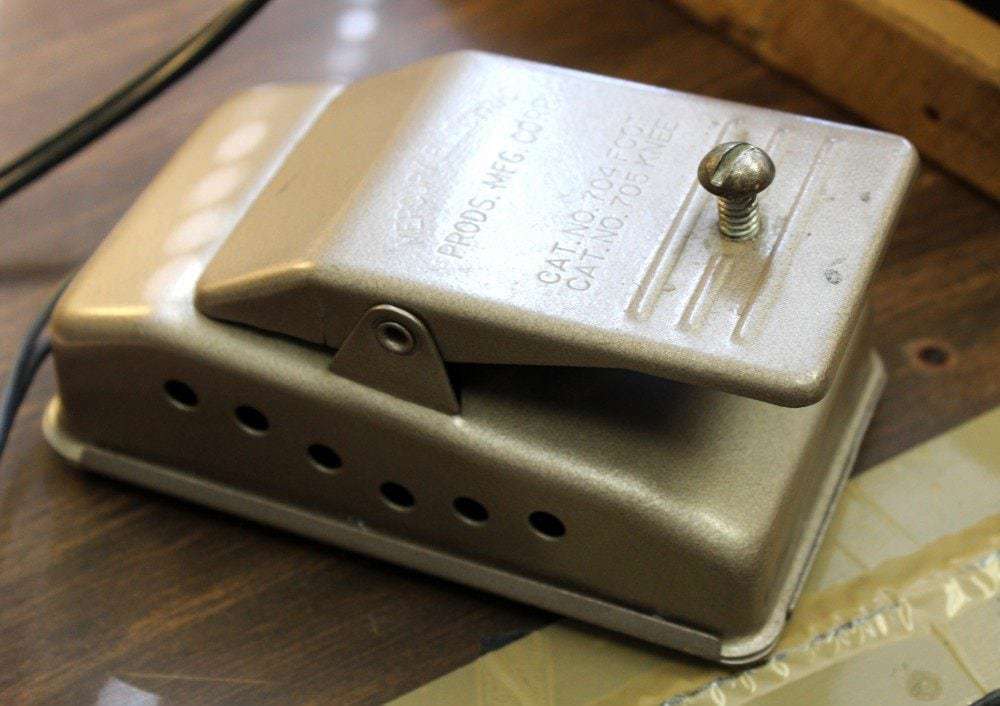
The Variac:
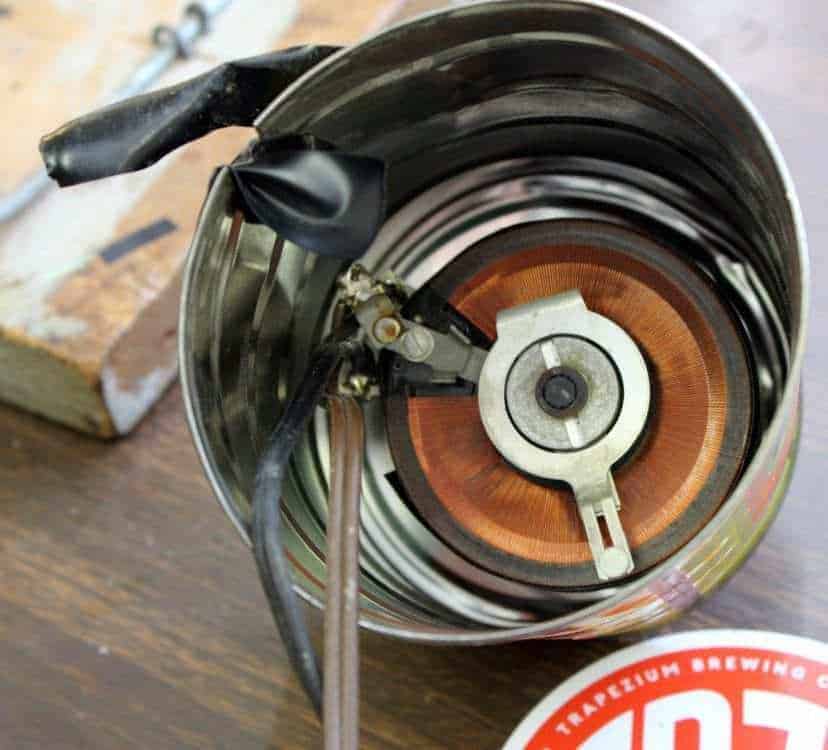
Lindy’s Machine Today
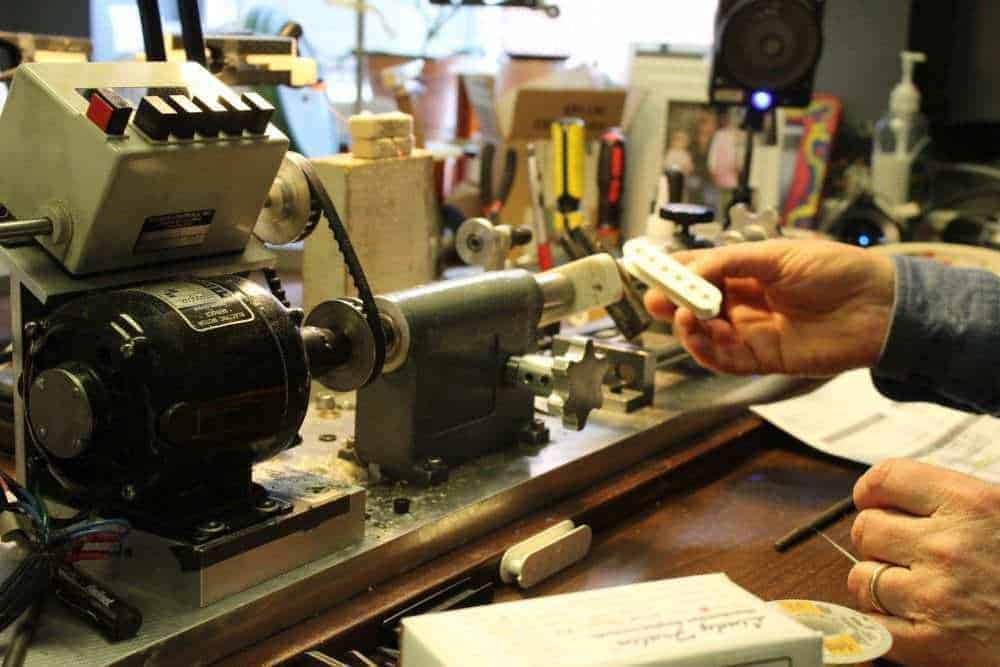 Lindy uses a more sophisticated machine today. Lindy’s machine is a modified lathe machine, equipped with a Turn Counter, and a rotating Cam that is used to set the pickup wire limitations. When the Turn Counter hits 0, the machine cuts off. Lindy uses that Six-Sided Knob to over-ride the Cam, and use it to scatter-wind our pickups. He’s super happy that he doesn’t have to hold the wire by hand anymore, and we can achieve a level of consistency that has made our pickups famous.
When you call up, Lindy is usually the one who answers, sitting here at this machine. You can often hear the whirring of the motor in the background. You can hear the passion – Lindy’s doing what he loves to do, every day.
Lindy uses a more sophisticated machine today. Lindy’s machine is a modified lathe machine, equipped with a Turn Counter, and a rotating Cam that is used to set the pickup wire limitations. When the Turn Counter hits 0, the machine cuts off. Lindy uses that Six-Sided Knob to over-ride the Cam, and use it to scatter-wind our pickups. He’s super happy that he doesn’t have to hold the wire by hand anymore, and we can achieve a level of consistency that has made our pickups famous.
When you call up, Lindy is usually the one who answers, sitting here at this machine. You can often hear the whirring of the motor in the background. You can hear the passion – Lindy’s doing what he loves to do, every day.
Want more posts like this?
Subscribe for tone tips, tricks, and more.

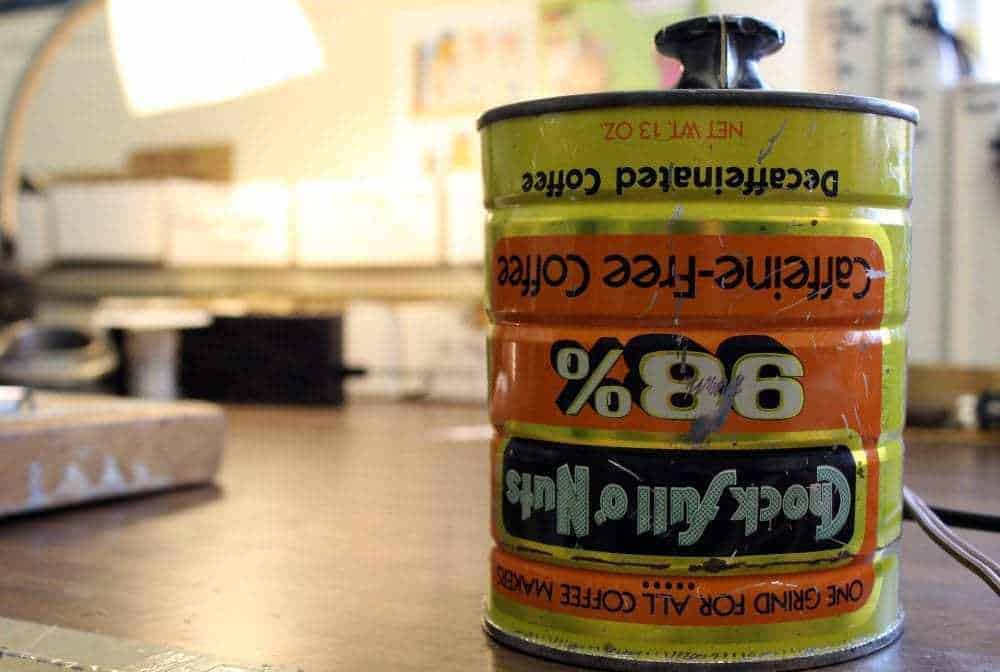

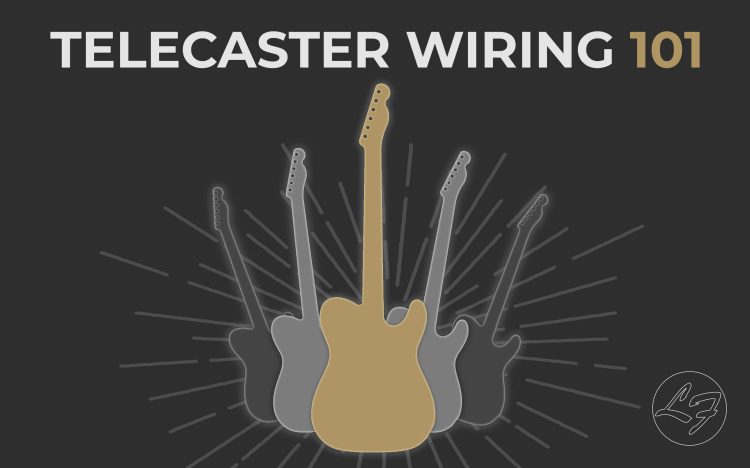

I’m wanting to build an electric guitar with a 1 7/8 nut width. Which I think means the pickups will need to be a bit wider than I can buy. Can you build something like this? The string spacing at the nut will be 2 1/4 from low E to high E.
Hey David, we’re pretty limited in terms of what we can custom build. However, our Big Single would be a good fit here. I can fit a 60mm bar magnet in that pickup. We make the Big Single in a Mini Format as well.
Hallow, I’m sending this from Japan. I’m making hand wound pickups using the second hand bobbins which are broken.
I use manual drill instead of motor and guide coil by my right hand while rotating the hand drill by left hand. I had used electric drill but the sounds was not so nice as manual rotation. Why?
In order to add some brightness to the dark tone, I uses 2 types of wire, one is UEW 0.05mm with 2K and Plain Enamel or Heavy FB AWG42 with 3K for example, connecting them in series with solder, for single coil. For Strat, I change the combination of mixture, like front for darker, middle for brighter and rear for half. For Hum, I change such combination for each bobbin.
Do you think it is workable? If you have any interests on my letter, return your comment and appreciated.
And I have tried to wind 2 wires (like 0.05mm and 42) at one time, then connect one start and one end.
In such case, the tone tends to be mild than the series connection of 2 kind of wires. How do you think about that?